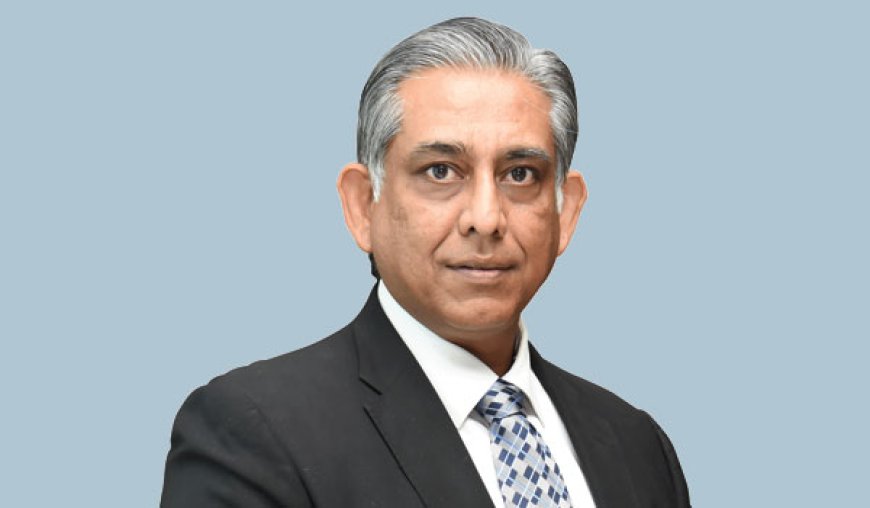We are open to working with international experts to bring advanced technologies in India.
India has the fourth-largest railway network in the world, covering over 65,000 route kilometres. Every day, about 22-million people travel by train, and the system carries around 1.4-billion metric tonnes of freight each year.

What are your views on the current developments in railway infrastructure?
India has the fourth-largest railway network in the world, covering over 65,000 route kilometres. Every day, about 22-million people travel by train, and the system carries around 1.4-billion metric tonnes of freight each year.
At present, Indian Railways is undergoing rapid development, with main focus areas including increasing train speeds, improving passenger safety, and adopting modern technologies. These advancements also include automatic signalling systems, collision protection like Kavach, and modernised coaches.
Doubling of tracks is a significant development, as it helps the network handle more traffic and reduces travel time. In FY 2023-2024, around 2,244 kilometres of tracks were doubled. The target for FY 2025-2026 is 2,600 kilometres, with an estimated cost around Rs 32,000 crore.
Electrification is another big step forward. As of February 2025, over 97% of the broad-gauge network has been electrified.
The Vande Bharat Express has made inter-city travel faster and more comfortable, operating between cities up to 800 kilometres apart and reaching speeds of up to 200 kilometres per hour. By January 2025, 136 Vande Bharat trains were running across the country. The newer Amrit Bharat Express now connects cities more than 800 kilometres apart, offering affordable and efficient travel to thousands of commuters.
Freight capacity has also expanded with the introduction of heavy haul trains and double-decker containers. The Ministry of Railways is developing 3,260 kilometres of dedicated freight corridors, which will give exclusive space for freight train. As a result, freight operations won’t need to share tracks with passenger trains, reducing delays and improving travel time for both. These corridors will also help reduce road congestion and lower maintenance costs, especially as road networks and ports have seen significant development in recent years.
Semi high-speed corridors are also being planned. Eight such corridors have been identified around New Delhi, with three already under construction. These corridors will support trains running at speeds of up to 160 kilometres per hour, improving regional travel connectivity by enabling daily travel from towns like Meerut, Alwar and Panipat to Delhi.
Under the Amrit Bharat Station Scheme, 1,318 stations have been selected for redevelopment. These will be upgraded with modern amenities, offering facilities similar to airports.
India’s first high-speed rail project, connecting from Ahmedabad to Mumbai, is also under construction. The 508-kilometre route will support trains running at 320 kilometres per hour, reducing travel-time to about two-and-a-half hours.
Together, these developments highlight the major transformation underway in Indian Railways – ranging from new lines to upgraded stations, dedicated freight corridors and faster, more reliable travel.
What are your major contributions to these development projects?
Tata Consulting Engineers (TCE) is proud to have supported several of landmark development projects. We are providing project management consulting for the entire 508-kilometre route of India’s first high-speed rail project. Our teams operate from dedicated project offices set up along the corridor, delivering comprehensive project management services to NHSRCL. The construction work is progressing steadily.
We are also the design consultants for the first corridor of the Agra Metro, a portion of which was inaugurated by the Prime Minister in March 2024.
We are working on major station redevelopment projects at Jammu Tawi in the north and Chennai Egmore in the south. Our responsibilities include project management and auditing design drawings for quality and accuracy.
A lot of modernisation is underway in railway infrastructure. What opportunities do you look forward to in these projects?
Yes, railway infrastructure in India is being upgraded in significant ways, and we see great opportunities to support this growth. As a consultancy with expertise across all engineering fields, we believe we can play an important role in this transformation. We are also open to working with international experts to bring advanced technologies in India.
We take pride in being the first Indian consultancy to provide project management support for a high-speed rail project, and we look forward to contributing to more such corridors in future.
Station redevelopment is another area where we can add substantial value. Our strength lies in delivering end-to-end engineering services across architecture, civil, structural and systems design. We also see future opportunities in areas such as track doubling, electrification and the upgrading of older railway systems.
How does the modernisation of railway stations push the growth of railways?
Most railway stations in India were built during the colonial period, and their designs no longer meet the needs of today’s passengers. With the increase in number of people using trains, there is an increasing demand for modern, efficient, and user-friendly facilities.
Older, crowded stations with limited infrastructure may make rail travel less appealing for some passengers. Upgrading these stations can make travel more comfortable, safer and easier. This also aligns with the broader vision of a developed India by 2047.
Modernisation also creates new revenue opportunities. By utilising unused land and airspace for commercial development, stations can generate additional income while transforming into vibrant urban hubs around transport infrastructure.
What are the steps needed for the holistic development of Indian railway infrastructure?
To fully upgrade India’s rail system, several essential steps will need to be taken. These include upgrading aging infrastructure, accelerating project execution, prioritising safety, adopting new technologies, and making operations more efficient and sustainable. Today’s passengers expect clean stations, modern amenities, reliable trains, safe and timely journeys, and smooth transfers between services.
High-speed and semi high-speed corridors can help meet these expectations, but it’s equally important to ensure that ticket fares remain affordable.
It is also important not to ignore freight, as it contributes significantly to railway revenue. Besides, Indian Railways also owns vast land assets across the country. Some of these can be developed for commercial use, creating new income streams to fund future growth.
How do you look at the future of railways in India?
The future of Indian Railways looks promising, driven by forward-looking government policies such as the National Rail Plan, Amrit Bharat Station Scheme and Gati Shakti Terminals are helping drive railway development.
Initiatives like the Mission Raftaar aim to increase the speed of passenger and freight trains. Important routes, such as New Delhi to Mumbai and New Delhi to Howrah, are being upgraded with improved tracks, bridges and new systems.
Vande Bharat trains are already running on 66 routes, with a target of deploying 4,500 such trains by 2047. A new sleeper version, designed to run at 220 kilometres per hour, is in development. Simultaneously, key corridors are being upgraded to support speeds of up to 160-kilometres per hour.
Dedicated freight corridors spanning 3,300 kilometres are under construction. These will ease congestion on passenger routes and help reduce India’s high logistics costs, currently at 13-15 % of GDP. The goal is to bring this down to 8 percent.
The Diamond Quadrilateral project aims to connect Delhi, Mumbai, Chennai and Kolkata with high-speed trains in the future. The Indian Railways is also exploring next-generation technologies like the hyperloop. The proposed Mumbai-Pune hyperloop would reduce travel time to just 14 minutes and carry up to 10,000 passengers per hour. A test track near Chennai has already been completed, with trials are expected soon.
At TCE, we are proud to be a part of this transformation of the Indian Railways. We remain committed to delivering engineering solutions that help build a faster, safer and more connected transport network for our country.







